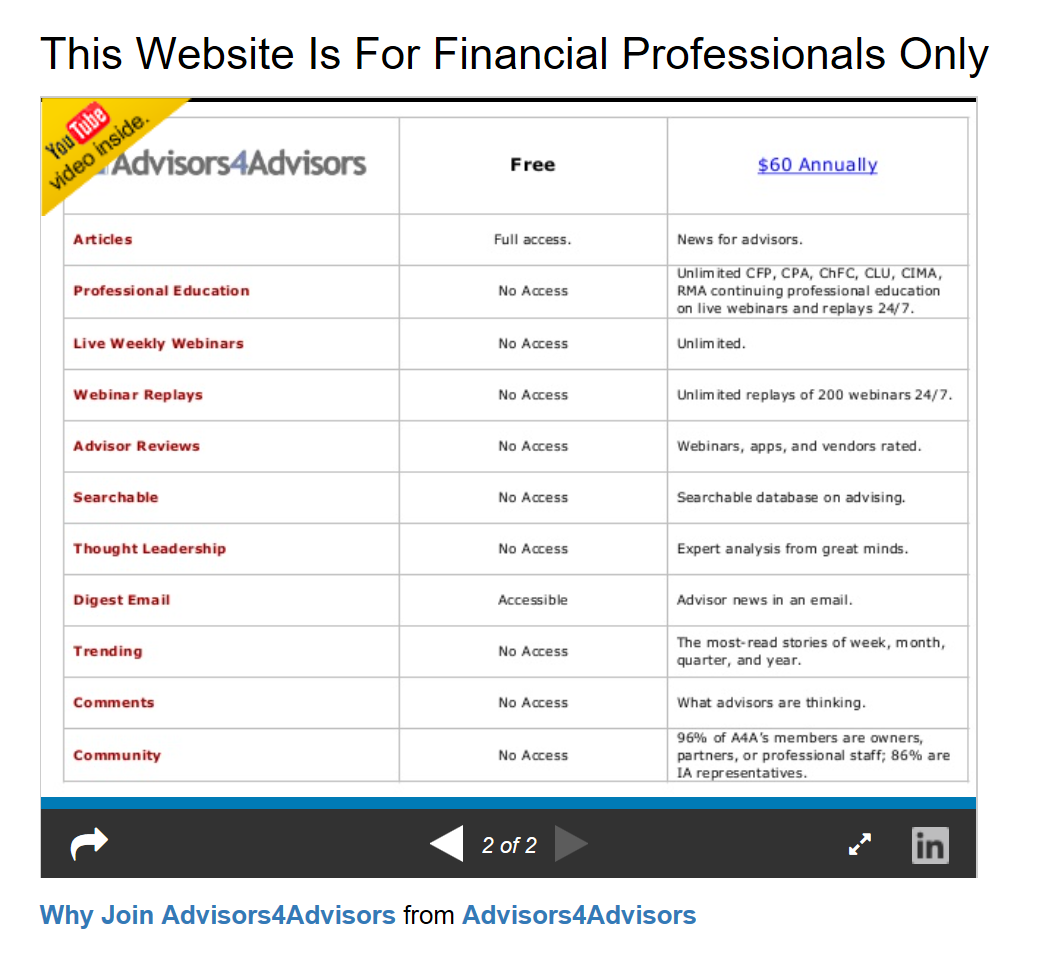Getting Your RIA To The Next Level: Did You Reach Your Goals 2013? Prepare For a Successful 2014 Hot
After four 90-day periods you should have made marked progress on each of the six steps and should see noticeable results in how your firm operates.
The key to successfully making progress in growing a more successful firm is constantly and consistently focusing and working on Steps 4-6 after Steps 1-3 are set. Each 90-day period provides the right timeframe to complete (or at least make significant progress on) high priority short-term tasks and projects that move your firm forward.
Here are the six steps to help your firm get to the next level.
Step One: Create a strategic plan and refer to it throughout the year to guide the firm.
This step is a series of smaller decisions that need to be determined by the leaders of the firm. It includes deciding on a mission (core focus) and vision (who and what your organization is, where is it going, and how is it going to get there). The vision will point you to where you want to be in the future. From there, develop longer-term goals (more than 90 days) and identify shorter-term tasks and projects (less than 90 days) that need to be completed to reach your longer-term goals.
Develop your updated 90-day goals each quarter. Roll over any from the previous 90-days that still need to be completed.
Have you developed your strategic plan and refer to it on an ongoing basis? Have you identified your vision? What are your longer-term goals? What tasks and projects need to be assigned and completed to reach your 90-day goals?
Step Two: Assign someone in your firm the role of “Implementer.”
Identify someone in your firm to oversee the completion of the tasks and projects to reach each of the 90-day goals. In a larger firm, you may (should) have someone with the right skill set to handle this role to free up the owners to work on client-focused responsibilities. The role would also be a good fit for someone handling the COO responsibilities or it could be outsourced to a business coach (someone who can hold staff accountable).
The key responsibilities of this role are: 1) make sure the firm has the correct staff in place to reach longer-term goals, 2) prioritize shorter-term tasks and projects and ensure that progress is being made on these as well as toward reaching the longer-term goals, 3) identify and assign tasks and projects to the correct staff members and hold them accountable, and 4) set timelines for task and project completion.
Holding your staff accountable for completing these shorter-term tasks is critically important to reaching the longer-term goals and ultimately the future vision of your firm. Without accountability to timelines, it becomes easy to put things off.
The Implementer role is extremely important for continuing to make positive progress toward your longer-term goals. This person will guide Steps Three through Six, so it is critically important to give this role authority and responsibility to make progress.
Who is the “Implementer” for your firm?
Step Three: Make sure you have the right staff in place to execute your strategy.
Sometimes, for a variety of reasons, the person in a particular role is not the best person for the position. Sometimes they start out strong in the role, but over time, their career path interest and/or strengths may change. The employee may also have outgrown their previous role. As the firm’s needs change, this leads to changes in employee’s responsibilities. Make sure you are always staying slightly ahead of your firm’s personnel needs.
Analyze your current staff and identify any changes or additions you need to make. Do you have the correct staff in place for your future anticipated needs?
Step Four: Focus on critical tasks and projects that move the firm toward longer-term goals.
Look at all the issues your firm struggles with and the projects you need to work on to move your firm ahead. Prioritize each issue and place those with the highest priority “needs to be completed” in the next 90 days at the top of the list. Decide what can and needs to be completed today and this week to remove the issue or gets you closer to completing the project.
What issues and projects need your attention TODAY?
What can you do TODAY and THIS WEEK that moves you closer to resolving issues and completing tasks and projects?
What tasks and projects need to be assigned and completed to reach your 90-day goals (from Step 1)?
Step Five: Assign accountability for completing the shorter-term tasks and projects.
Once the issues and tasks have been identified, assign accountability (from Step 2- Implementer) for completing each of these. Spread them out to the correct individual(s) and place deadline dates on each task.
Who should/will be responsible for each issue, task, and project your firm needs to work on?
Step Six: Measure your progress.
Have the Implementer meet weekly with your staff to measure your progress on the shorter-term issues, tasks and projects. Hold quarterly meetings to measure progress toward quarterly and yearly goals. The Implementer also has authority and responsibility to hold people accountable. These weekly and quarterly meetings are also the time to address anything hindering completing tasks, issues, or projects by the completion dates. After these progress meetings have been held consistently, you will begin seeing progress toward your longer-term goals. Once progress is witnessed by your staff, it develops momentum throughout the organization.
Are you consistently and methodically measuring your progress?
Results?
If you followed these Six Steps in 2013 with discipline, patience, and focus during the first 90-day period, you should have gained momentum during the second and third 90-day periods. Now, in the final 90-day period of 2013, you should begin seeing Results. Have you started to notice results (few or many)?
If you follow these Six Steps consistently, you will notice progress. Seeing consistent progress develops confidence among your team and builds momentum.
It takes discipline, patience, and focus to create momentum and generate results.
2013 is gone, but 2014 will be a year of goals achieved if you follow these six steps and incorporate discipline, patience, focus and momentum while working your plan.
Here’s to a prosperous 2014!
Build your business wisely.









